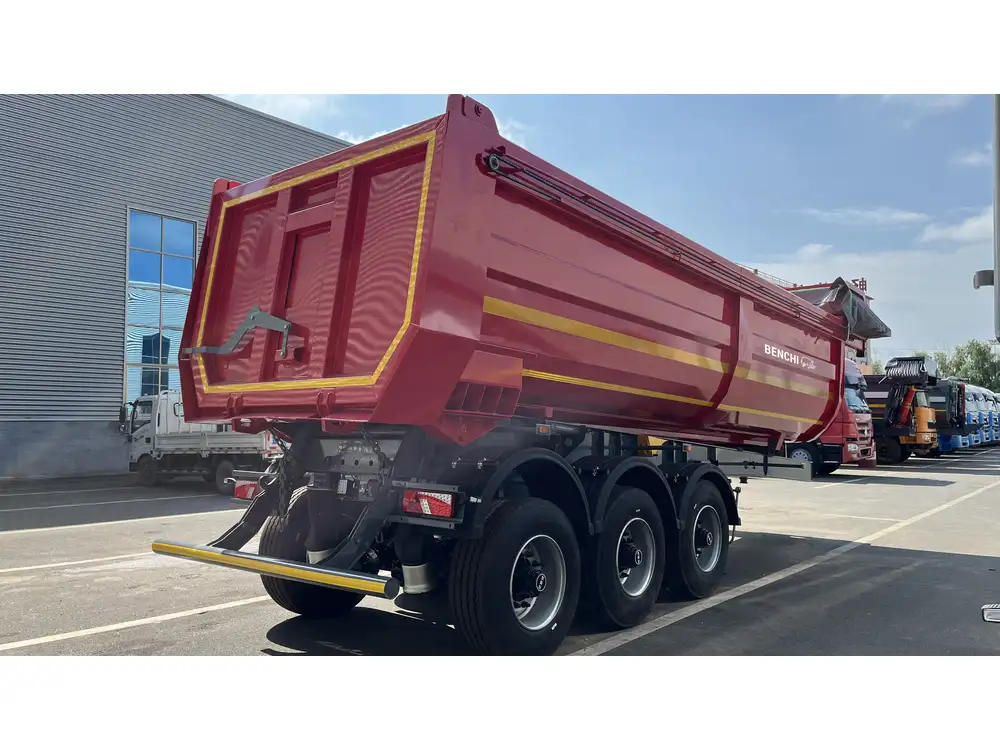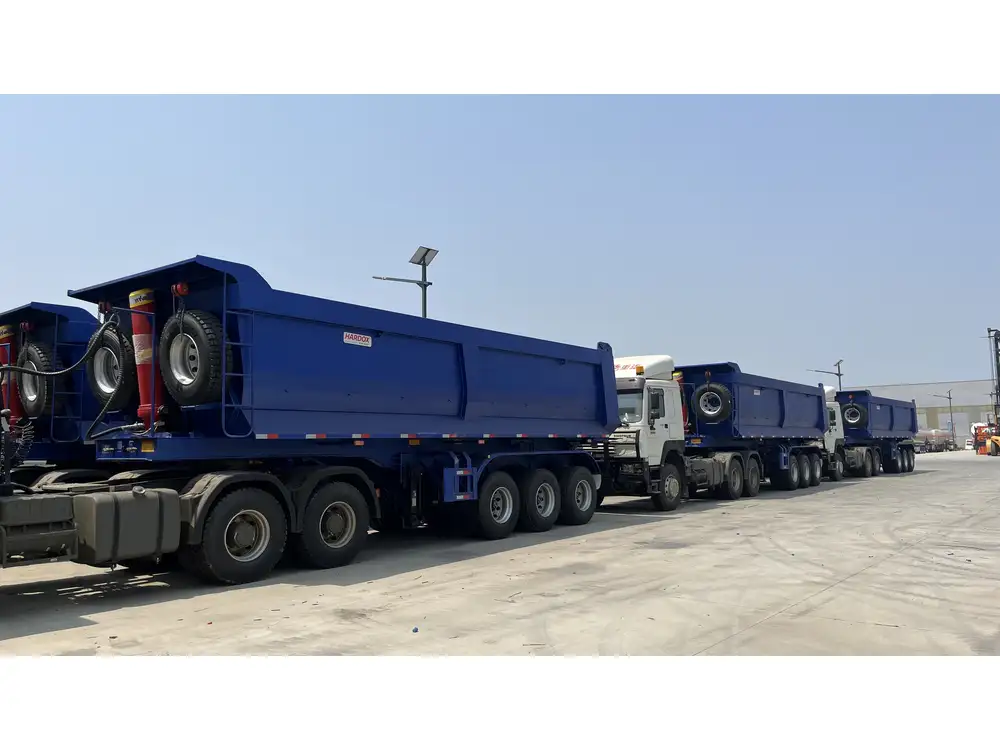Navigating the complexities of road transport requires a deep understanding of vehicle dynamics, especially for those utilizing semi-trailers. Among various operational aspects, the turning circle stands out as a critical measure that influences maneuverability, safety, and efficiency. This article delves into the intricacies of the turning circle of a semi-trailer, shedding light on its significance, calculations, factors affecting it, and practical implications for drivers and fleet operators alike.
What is the Turning Circle?
The turning circle, also referred to as the turning radius, is defined as the smallest circle that a vehicle can make while turning. For semi-trailers, this encompasses both the truck (tractor) and the trailer, leading to a more complex turning maneuver compared to standard vehicles. Understanding the nuances of the turning circle is essential for the following reasons:
- Maneuverability: A smaller turning radius allows for tighter turns and greater ease in navigating urban landscapes.
- Efficiency: Companies benefit from reduced fuel consumption and improved logistics when vehicles can turn effectively in confined spaces.
- Safety: Knowledge of turning capabilities is critical in preventing accidents during complex maneuvers.
Calculating Turning Circle of a Semi-Trailer

Key Variables in the Calculation
- Wheelbase: The length between the front and rear axles of the tractor and trailer influences how the vehicle pivots.
- Trailer Length: The overall length of the trailer also plays a crucial role in determining turning capabilities.
- Axle Configurations: The type and number of axles affect how well a semi-trailer can turn.
- Steering Angle: The angle at which the front wheels of the tractor can turn significantly influences the turning radius.
Turning Radius Formula
To find the turning radius, an approximation formula can be utilized:
[ R = \frac{L}{\sin(\theta)} ]Where:
- ( R ) = Turning radius
- ( L ) = Wheelbase of the tractor or length of the trailer
- ( \theta ) = Maximum steering angle
Example Calculation
Let’s consider a semi-trailer with a wheelbase of 20 feet and a maximum steering angle of 30 degrees.
Calculating the turning radius yields:
[ R = \frac{20}{\sin(30°)} = \frac{20}{0.5} = 40 \text{ feet} ]This indicates the theoretical minimum radius the vehicle can achieve during a turn.

Factors Affecting the Turning Circle
Understanding the different factors that impact a semi-trailer’s turning circle is vital for optimizing performance. Below, we explore these elements in detail.
| Factor | Impact | Explanation |
|---|---|---|
| Road Conditions | Major influence | Uneven surfaces or wet conditions can hinder turning capability. |
| Load Distribution | Affects stability | Uneven load can lead to off-balance behavior during turns. |
| Suspension Type | Determines maneuverability | Different suspension systems offer varying levels of flexibility and shock absorption. |
| Axle Arrangement | Influences pivot point | Multi-axle setups can change the dynamics of turns significantly. |
| Tire Type | Affects grip and traction | The kind of tires used can enhance or limit control during turns. |
The Role of Load Characteristics
Load is a pivotal factor in determining how a semi-trailer performs during turning. Heavier loads increase the inertia and may cause longer stopping distances and a larger turning radius. Conversely, lighter loads allow for agile maneuvering but can affect stability.
Practical Implications for Fleet Operators
Fleet operators and drivers must comprehend the turning characteristics of their semi-trailers to ensure optimal performance.

Urban Navigation
In urban settings, where roads are typically narrower and intersections are more frequent, understanding the turning radius is crucial. Utilizing vehicles with a tighter turning circle aids in:
- Reducing the need for multi-point turns.
- Minimizing the risk of tire or trailer-swing collisions.
- Enhancing the overall efficiency of deliveries in confined spaces.
Parking and Loading Docks
The design of loading docks and parking facilities needs to take the turning circle into account. Aspects to consider include:
- Adequate turning space for larger vehicles.
- Realistic assessments of maneuverability for different types of trailers.
Compliance and Regulations
Certain jurisdictions impose regulations governing the maximum dimensions and weights that can be transported. This often correlates directly with the turning capabilities of the vehicle, necessitating evaluations by fleet managers and compliance professionals.

Advanced Considerations: U-Turns and Complex Maneuvers
The ability to execute U-turns or similar complex maneuvers is often constrained by a semi-trailer’s turning circle. For instance, comprehensive training and assessment of the vehicle’s capabilities are paramount for drivers tasked with navigating tight areas.
U-Turn Execution
Executing a U-turn with a semi-trailer requires significant planning:
- Survey the Area: Knowing the available space can prevent unintended collisions.
- Approach Strategy: Initiate the turn from the correct angle to ensure optimal tracking of the trailer.
- Use Spotters: When in doubt, employ ground personnel to guide the maneuver safely.
Comparative Analysis: Different Semi-Trailer Types
Different types of semi-trailers exhibit varying turning radii due to their design and use cases. Below, we compare some of the most common types:
| Semi-Trailer Type | Approx. Turning Radius | Features |
|---|---|---|
| Standard Flatbed | 40-50 feet | Versatile, used for various loads |
| Reefer Trailer | 45-55 feet | Temperature-controlled, heavier |
| Tanker Trailer | 45-60 feet | Requires careful maneuvering due to load shift |
| Curtain Side | 40-50 feet | Easy loading/unloading, medium weight |

Implications for Usage Scenarios
The choice of semi-trailer type can significantly influence operational efficiency. For urban deliveries, standard flatbeds may be preferable due to their tighter turning circles, while tankers require more space due to increased length and weight.
Addressing Common User Concerns
What If Your Vehicle Can’t Make a Turn?
When a semi-trailer cannot execute a turn successfully, it can lead to risk and complications. Here are some steps to consider:
- Assess Surroundings: Check for obstacles and plan an alternative route.
- Backtracking: When stuck, sometimes a coordinated forward and backward movement can reposition the vehicle more favorably.
- Consult Your Manual: Manufacturer guidelines often give detailed insights into handling turning scenarios specific to your model.

Enhancing Turning Capabilities
Fleet managers can look into several strategies to enhance turning capabilities:
- Regular Training: Investing time and resources into driver training on maneuvering and spatial awareness.
- Vehicle Maintenance: Ensuring proper maintenance of suspension systems and tires can enhance performance.
- Optimal Loading Practices: Adhering to load distribution guidelines can ensure stability during turns.
Conclusion
Understanding the turning circle of a semi-trailer is crucial for successful navigation, especially in complex urban environments and loading scenarios. Awareness of the factors influencing turning capabilities, alongside practical strategies for efficient operation, can significantly enhance fleet performance.
By leveraging knowledge about turning radii and addressing potential operational challenges, fleet operators and drivers can optimize their operations, ensuring safety, compliance, and efficiency in their transport endeavors. As roads and regulation evolve, keeping abreast of these dynamics will remain essential for sustained success in the freight industry.



